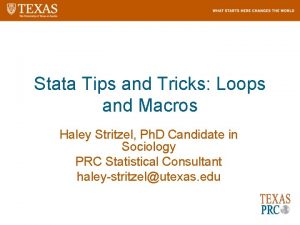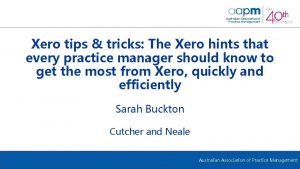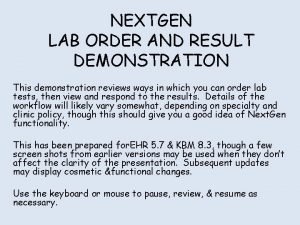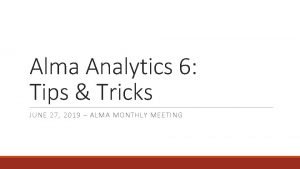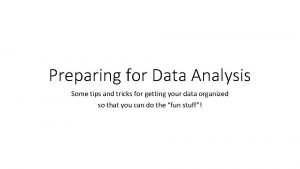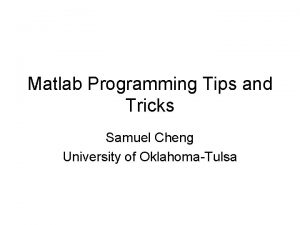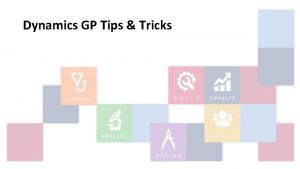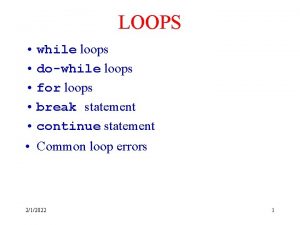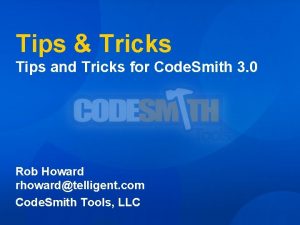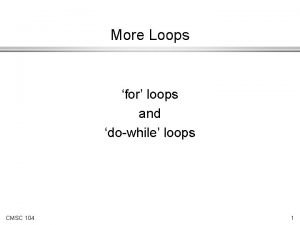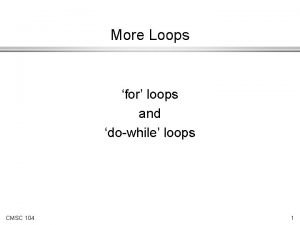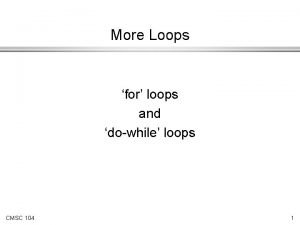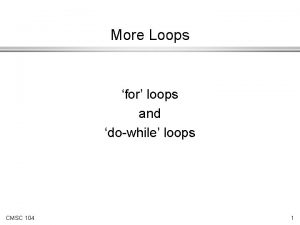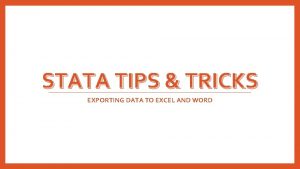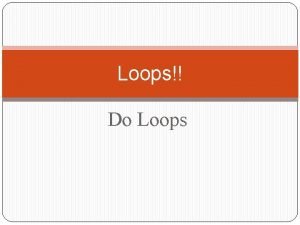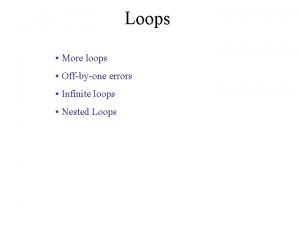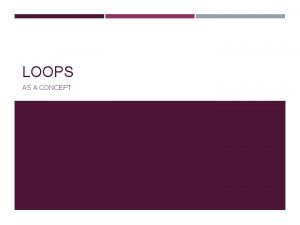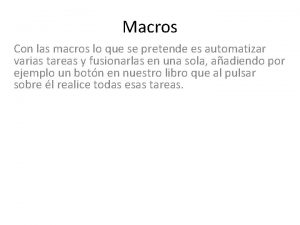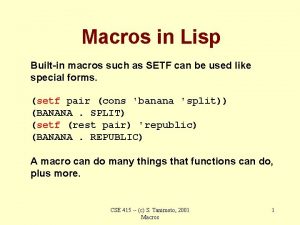Stata Tips and Tricks Loops and Macros Haley

















- Slides: 17

Stata Tips and Tricks: Loops and Macros Haley Stritzel, Ph. D Candidate in Sociology PRC Statistical Consultant haley-stritzel@utexas. edu

What are macros? • A short string of characters (macroname) that stands for another string of characters (macrocontents) • You can think of a macro as a shortcut or as shorthand

A very silly example Syntax is: local macroname macrocontents Or global macroname macrocontents You probably wouldn’t store a single number

But you might use macros for… • • Long lists of variables File paths Saved model results A sequence of numbers

Why use macros? • • • Better reproducibility Fewer user errors Cleaner code Fewer headaches Foundation for creating custom programs

Two types of macros • Local macros – Specific to a do-file or a Stata session – Disappears when you come to the end of a do -file or your Stata session • Global macros – Exists forever, across do-files, across sessions (until you overwrite it)

Two types of macros • Local macros – Type macro name within ` ’ (single quotes) to tell Stata you are referring to a local macro • Global macros – Type $ before macro name to tell Stata you are referring to a global macro

Less silly examples • Stata will open "D: UsersmaslowskyNatalityRecodesnatl_full. dta" • This is useful because if I ever re-organize my files, all I have to do is change macros at the beginning of the do file

• Use a local macro to define a list of covariates

What are loops? • A way to execute the same chunk of code for a series of numbers or variables • Like macros, loops make your code more efficient, easier to read, and less prone to error • Loops are especially helpful for cleaning data

Another silly example Syntax is: forvalues x=range { command `x’ } Where range is a range of numbers, e. g. 1/5: 1, 2, 3, 4, 5 2(2)10: 2, 4, 6, 8, 10 And command is a Stata command (generate, replace, regress, etc. )

forvalues or foreach? • forvalues only works with numbers • foreach is more flexible: – foreach x of numlist 1/5 { – foreach var of varlist x y z { • You can also refer to a previous macro – foreach var of local covariates { – foreach var of global covariates { • Note: “x” and “var” are arbitrary names – you could name these elements whatever you want

Less silly examples • Create a variable for grandparent in the household at every year • A little more tricky example with a longitudinal dataset with youth at different ages – create a variable for drinking at age 14 by looping through years until the year is equal to the year in which the youth was 14

Less silly examples • Perform the same regression model with different outcome variables • “eststo” saves the model results, which can then be exported

Nested loops – loops within loops • Can get very complicated very fast • Recommend no more than 3 nested loops • Every loop must begin with a { and end with a } on a separate line

Combining loops AND macros • Predicting time spent with parent based on household variables at ages 0, 2, 4, 6, and 8 Equivalent to writing (helpful when you have to repeat the same model with slightly different specifications)

Where to get help? • In Stata, type into command line: – help macro – help foreach – help forvalues • Send us an email or set up an appointment with us! consultants@prc. utexas. edu
 Stata tips and tricks
Stata tips and tricks Xero tips and tricks
Xero tips and tricks Alteryx tips and tricks 2021
Alteryx tips and tricks 2021 Nextgen lab
Nextgen lab Kronos trick
Kronos trick Igcse english paper 2 tips
Igcse english paper 2 tips Homework
Homework Navision tips and tricks
Navision tips and tricks Chemdraw tips and tricks
Chemdraw tips and tricks Alma analytics tips and tricks
Alma analytics tips and tricks Magento crud
Magento crud Data analysis tips and tricks
Data analysis tips and tricks Matlab tips and tricks
Matlab tips and tricks Ptc manufacturing apps
Ptc manufacturing apps Accessibility tips and tricks
Accessibility tips and tricks Google scholar tips and tricks
Google scholar tips and tricks Qlik sense tips
Qlik sense tips Gp tips and tricks
Gp tips and tricks
